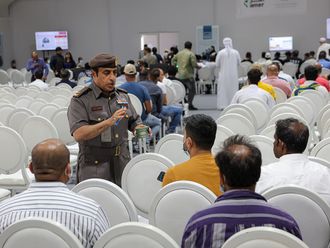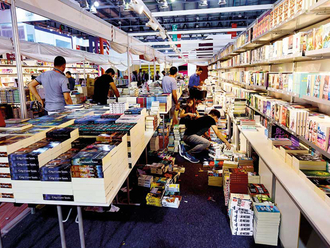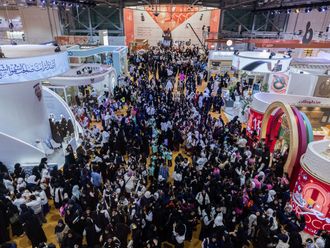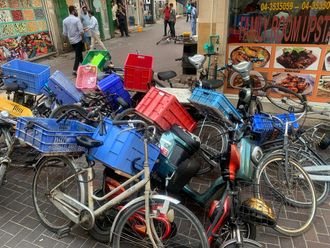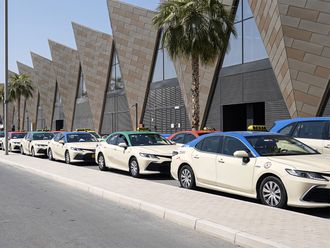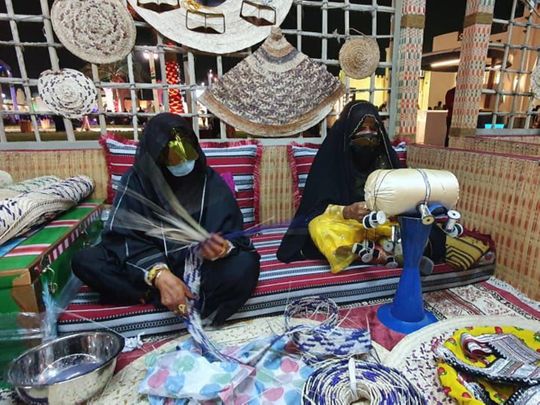
Abu Dhabi: “May you find a pearl in your beard,” the young visitor said as she greeted Ahmed Al Hammadi.
It was a greeting for an Emirati, and an especially apt one for the seasoned man, who had once made his living as a pearl diver. Al Hammadi greeted her back, then continued to weave a fishing net with his deft fingers.
He is one of the many UAE nationals displaying their skills and wares at Sheikh Zayed Festival in Abu Dhabi, and sharing wisdom and insight that is especially valuable in the UAE’s Year of the 50th.
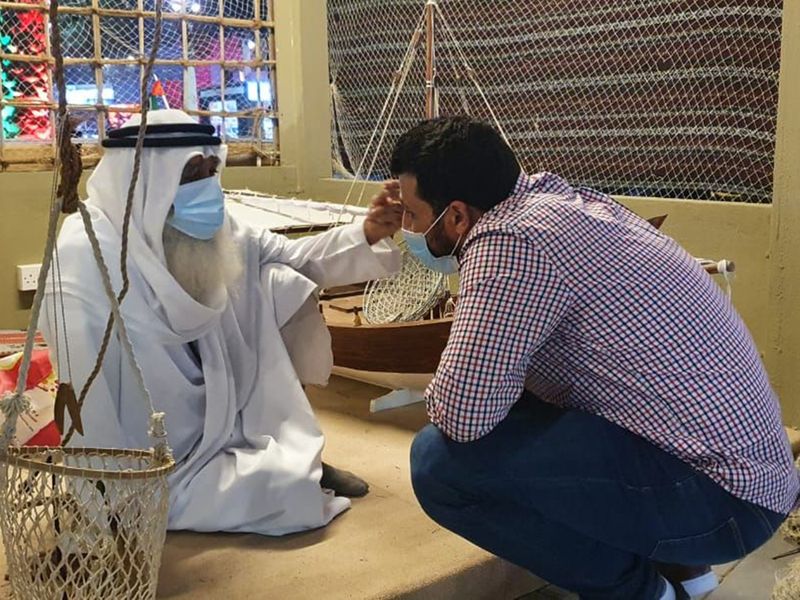
Holding on to values
“In the past, we returned home at the end of the day with a tired body but a relieved heart. It was much better than coming home with a relieved body, but tired heart, and I would advise the youth to hold their values close to their heart so that they can be at peace,” Al Hammadi advised.
“We have come such a long way as a country as a result of the guidance of our wise leadership and we must continue to hold on to the values that have brought us here.”
Al Hammadi himself learnt to weave a net as a 10-year-old, later graduating to diving for pearls with his father and uncles.
Before the Union
Describing the days before the formation of the UAE, Al Hammadi said he would rise at dawn for prayers, then spend the rest of the morning learning the Quran, with a quick break for a meal. At noon, the men would set off in their fishing boats, often returning only by dark.
During the pearling season, which typically started in summer and extended until November, boats would take the men deep into the Arabian Gulf for a month or even longer, with the men diving from time to time for pearls.
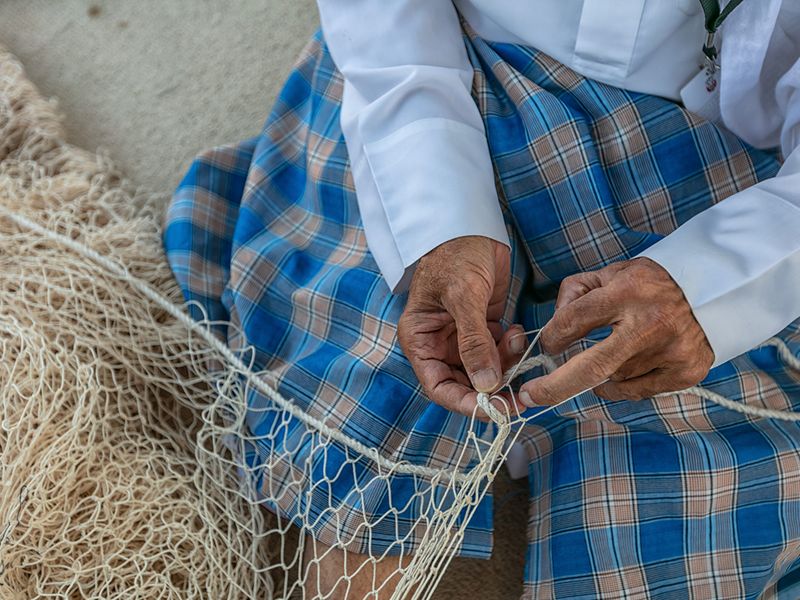
“Our diving suits were made of basic cloth, and our gear was rudimentary. There was a rope, called ‘az zubail’, tied to a rock and affixed to our feet that would help us sink, a wooden nosepin called al ‘fettam’ would help us hold our breath, and a woven basket called ‘al dean’ slung around our necks. We would descend up to 40 metres in search of oysters and deposit any that we found into the basket. Later in the boat, we would use a curved knife to turn over the flesh in the oyster in search for pearls,” Al Hammadi recalled.
New comforts
It was a tough life, one that today’s generation does not need to live. Al Hammadi himself had last dived for pearls in the early 1960s, before the UAE government stepped in to support the people with fishing boats and equipment.
“We drank salty water straight from the sea. Today, people have access to clean bottled water so easily that it can be hard to remember where we came from. But this is something we should never forget if we want to keep moving forward,” Al Hammadi said.
“We celebrated 50 years of the UAE just a while ago, and I would tell today’s youth to know their past. You cannot build your future without it.”
His message was echoed by Umm Mohammad, a 66-year-old Emirati who has raised 10 children of her own. “I learnt weaving as a 10-year-old and refined my skills through a centre opened by the Mother of the Nation, Her Highness Sheikha Fatima bint Mubarak Al Nahyan. I have taught my daughters, and I think young people should never leave these skills behind,” she said.
Traditional weaving
Umm Mohammad was seated on a colourful mat, holding on to pieces of shiny golden threads. The threads were affixed to bobbins on an oblong pillow, itself held on a stand placed on the floor, called a ‘kajooja’. Twisting and interlacing, Umm Mohammad worked to craft intricate patterns of ‘talli’, a traditional lace used to adorn celebratory outfits.
“We make the lace for the bottom of the trousers, the sleeves and the neckline. Times may have progressed, but talli lace, which can take up to three months to weave for an entire outfit, is still very prized,” Umm Mohammad said.
Her friend, seated next to her, was busy with another form of traditional Emirati weaving using palm fronds – called ‘khoos’. Dipping dried palm fronds in dye, she twisted the fronds together, patiently fashioning them into baskets, lids and even floor mats.
The work is intensive, but the results are especially intricate and pleasing. All around the women, their creations brighten up the walls of the stall, as it does their homes until this day. “We are blessed to know these skills well. And as the UAE moves ahead in its next 50 years, I would encourage that these skills be taught widely, not just at specialised centres but also at schools across the country,” she recommended.
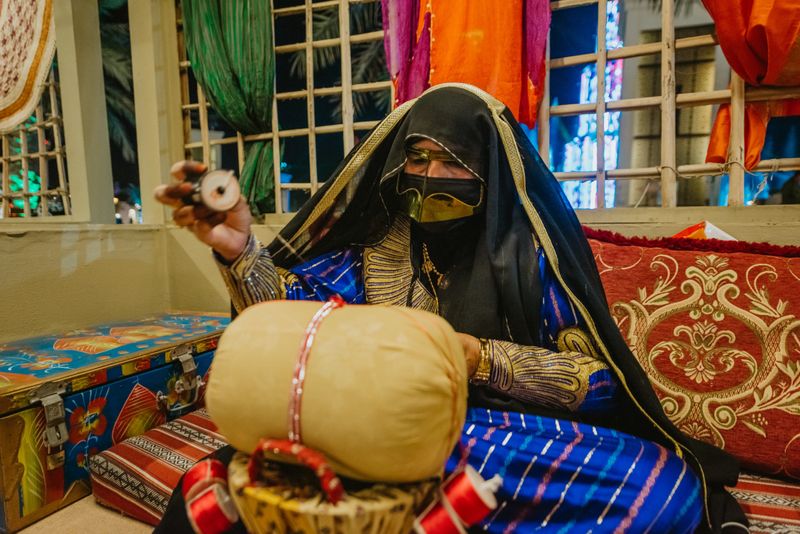
Sheikh Zayed Festival
Celebrating the heritage and diversity of the UAE, Sheikh Zayed Festival opened its doors on November 18, 2021. Amid its entertaining drone performances and fireworks, this edition of the six-month festival pays special tribute to the UAE in its 50th year.
The Festival runs until April 1.
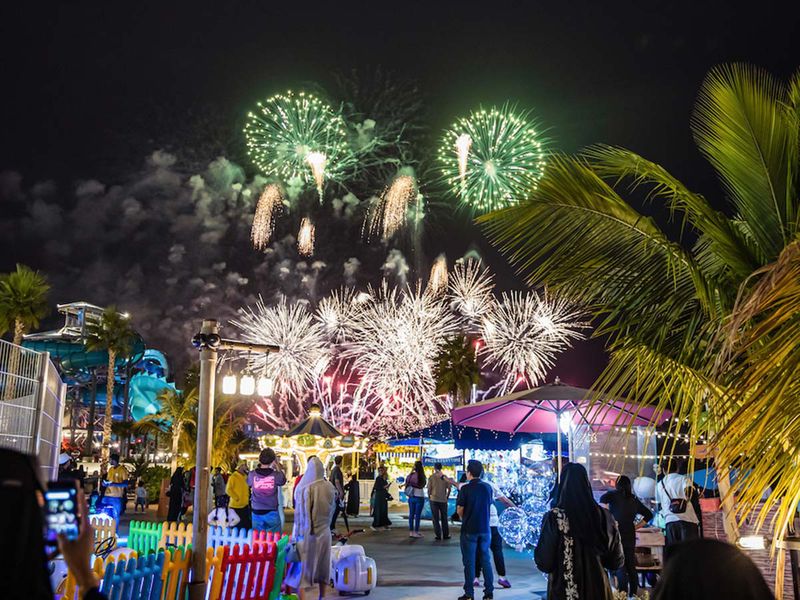
The bright central fountain therefore frequently wears the UAE colours, while a Year of the 50th Zone traces the country’s journey over the past five decades.
Located in the capital’s Al Wathba suburb, the festival is a fixture on the city’s annual events calendar. It is named after the UAE’s founding father, the late Sheikh Zayed Bin Sultan Al Nahyan, and sees thousands of excited visitors during its six-month run. Organisers said more than 22,500 visited its 2020 edition, which included more than 4,500 international cultural events.
Attractions
The site includes a series of national pavilions, along with dedicated zones for children’s activities. This edition of the festival also features a dedicated sporting zone by Al Forsan International Sports Resort, with go-karting, archery, racing simulations and climbing walls. A new glow garden and flower garden has been set up, and there will be daily laser and water shows at the central fountain.
In addition to live performances by a military marching band, visitors are regaled every day by traditional folklore acts, musical shows and interactive exhibitions.
Free bus services
Abu Dhabi’s Department of Municipality and Transport’s Integrated Transport Centre, which manages public transport in the emirate, had earlier announced that it would offer free daily bus services throughout the festival’s run. The bus leaves from the Main Bus Station in Abu Dhabi, picking up passengers from Bain Al Jesrain Co-Operative Society Supermarket and Baniyas Bus Station, before heading to the site.
Precautionary measures
Visitors must present an Al Hosn Green Pass to access the site. They must also wear face masks at all times.
Doors open every day at 4pm, with the events continuing until midnight on weekdays and until 1am on weekends and public holidays.
Entry tickets are priced at Dh5 per person, available at the gates, and on the ZayedFestival website. Entry is free for people of determination, children under three years and residents aged 60 years and older.


